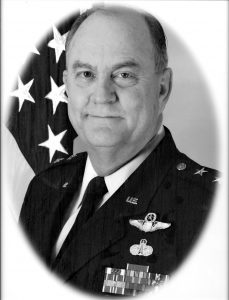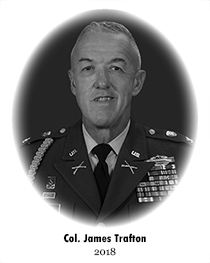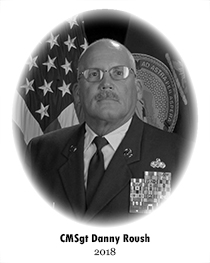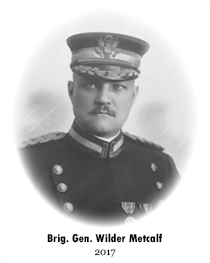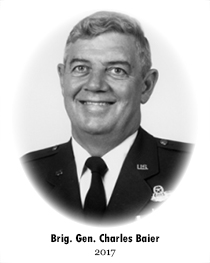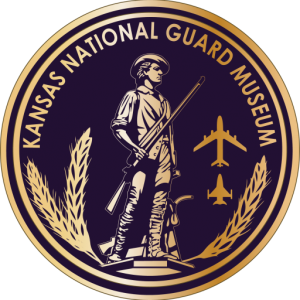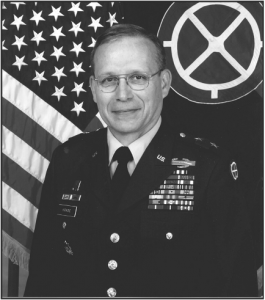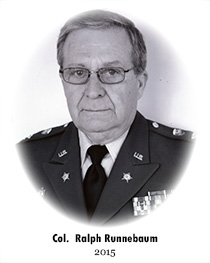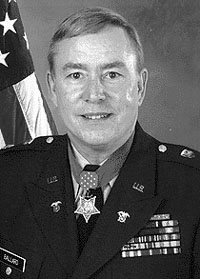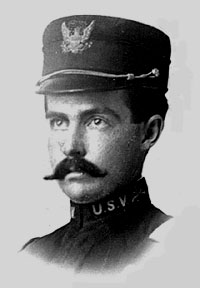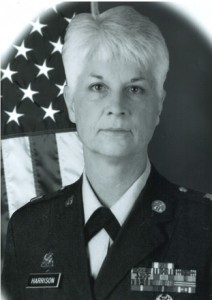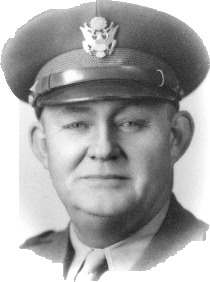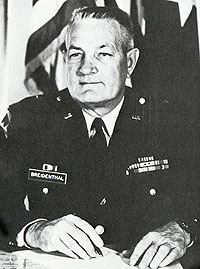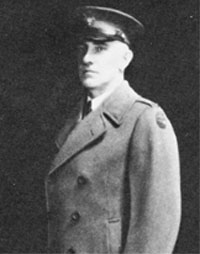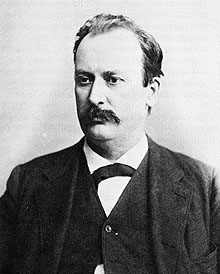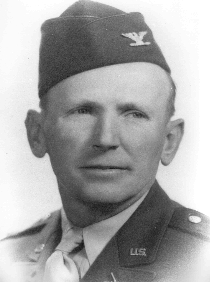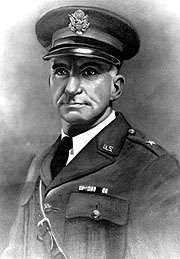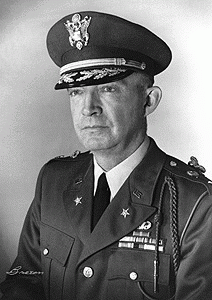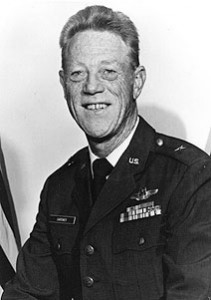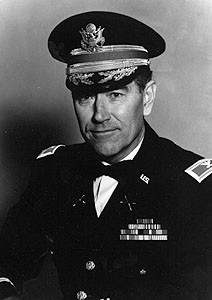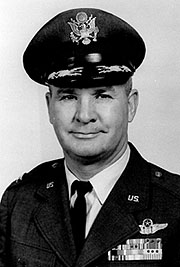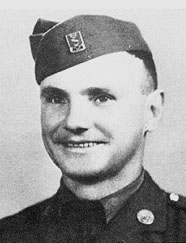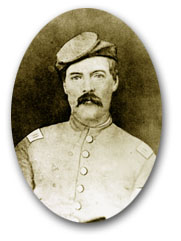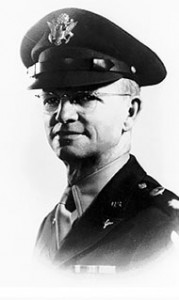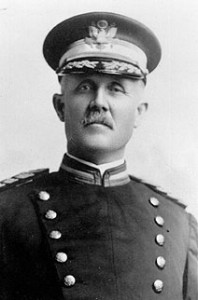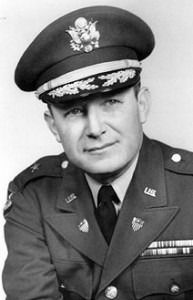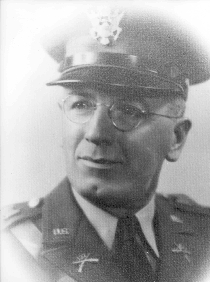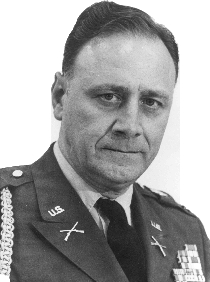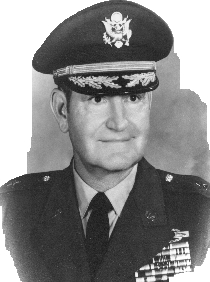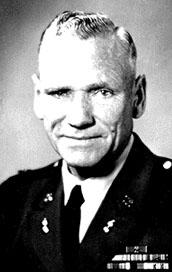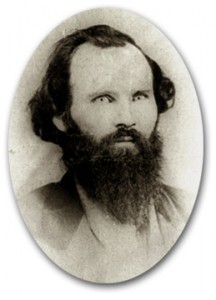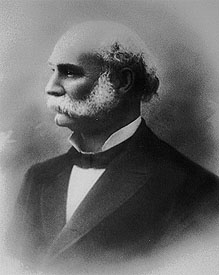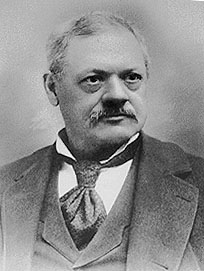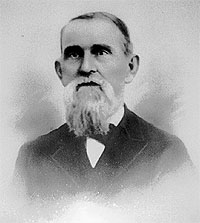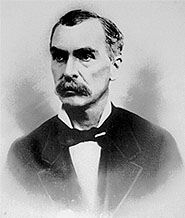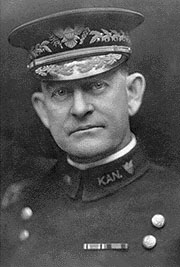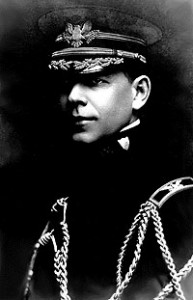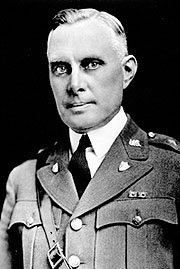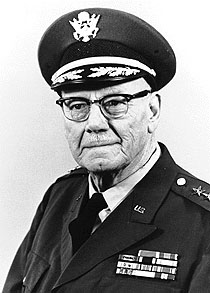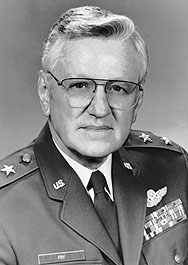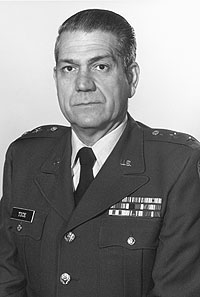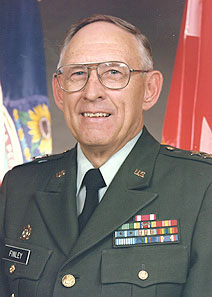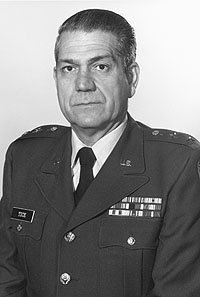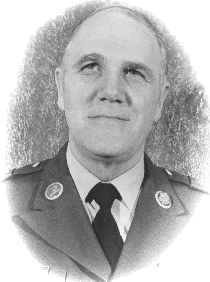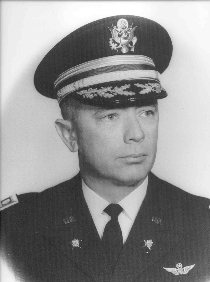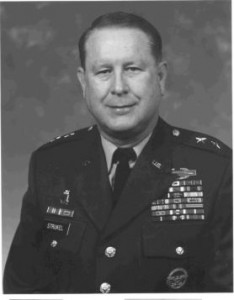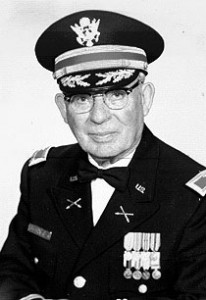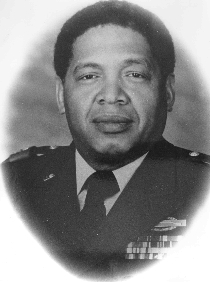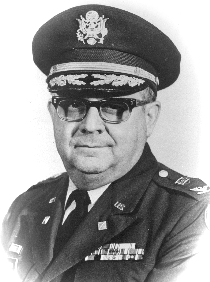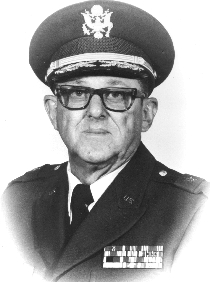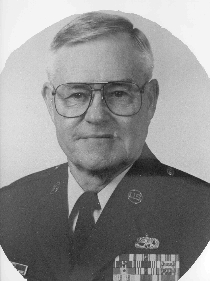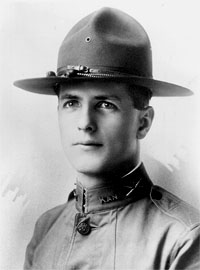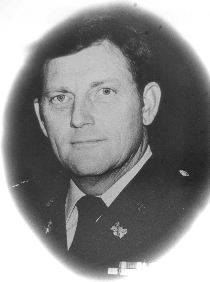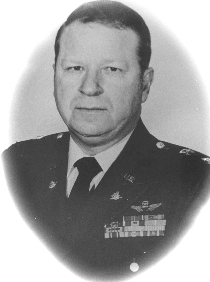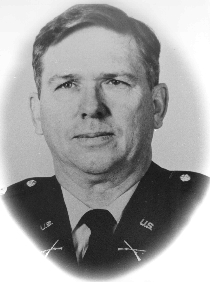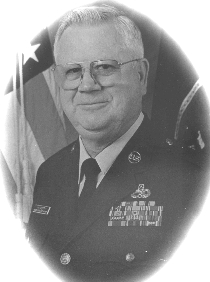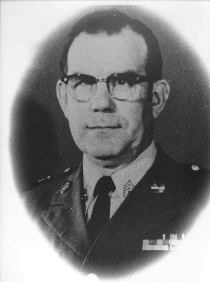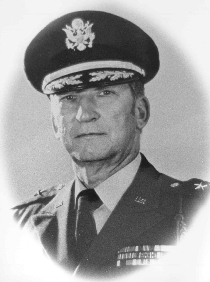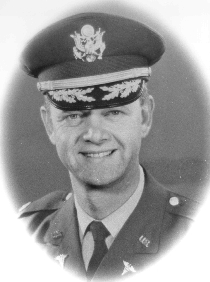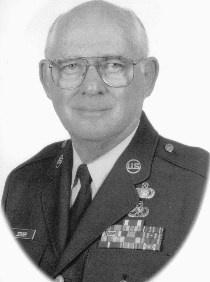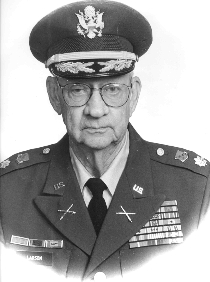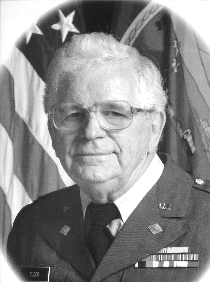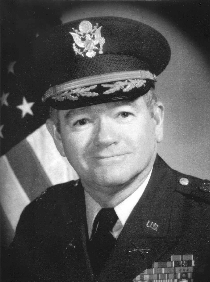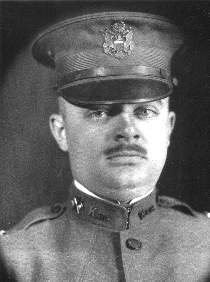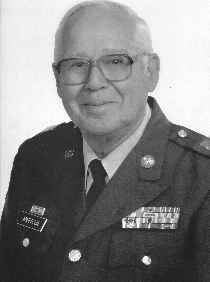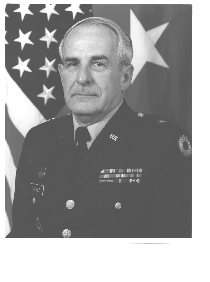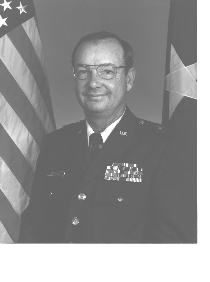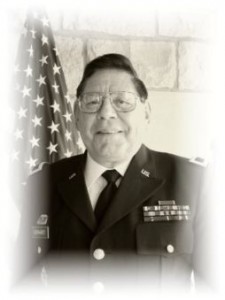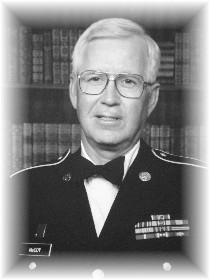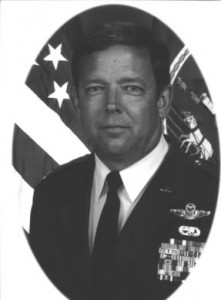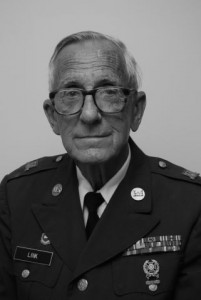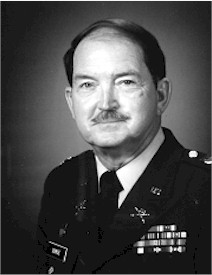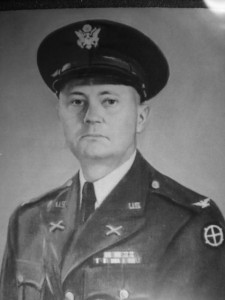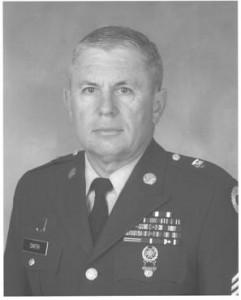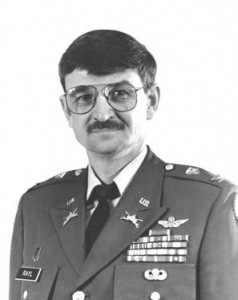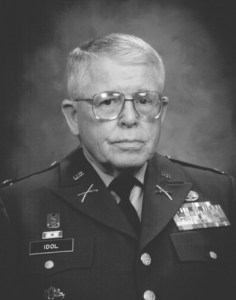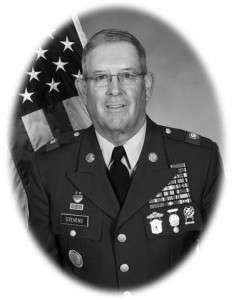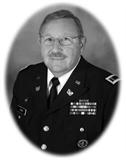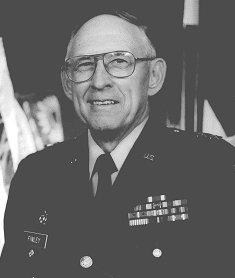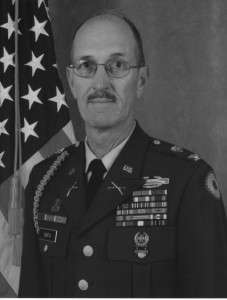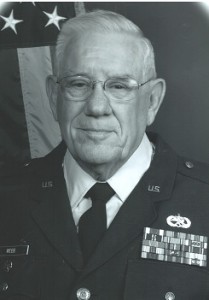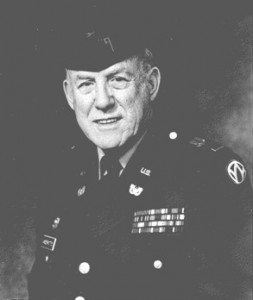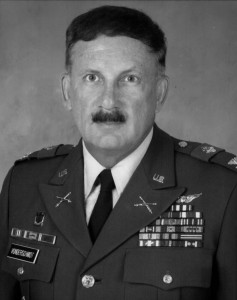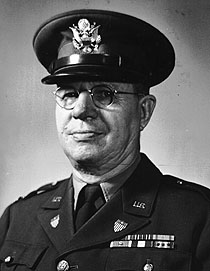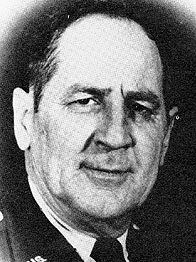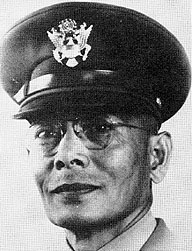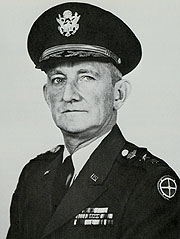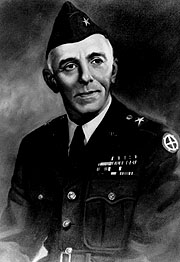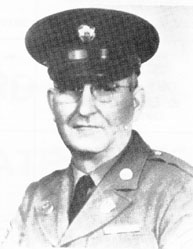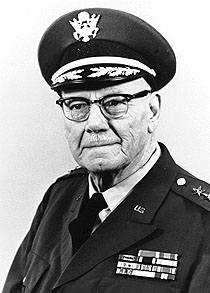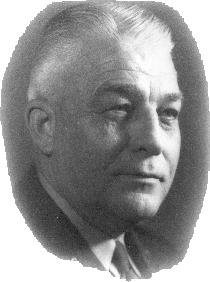The First Regiment Kansas Volunteer Infantry was raised under the call of President Lincoln, May 1861, for 400,000 volunteers. The men were recruited between the 20th of May and 3rd of June, 1861. The greater portion from may 28th to June 3rd, making almost an entire regiment recruited within a week. The rapidity with which men enlisted, and the earnestness manifested to proceed at once to the place of conflict, most clearly demonstrates the loyalty and patriotism of the citizens of Kansas. The regiment rendezvoused at Camp Lincoln, near Fort Leavenworth, Kansas, under the following officers, commissioned by His Excellency, Governor Charles Robinson.
The regiment thus organized adopted a rigid system of discipline and drill preparatory to the great work before it. During the stay of the regiment at the aforementioned camp, nothing worthy of note transpired, except the capture of a rebel flag that was unfurled in the town of Iatan, Mo., about eight miles above Fort Leavenworth. This enterprise was undertaken and accomplished without orders, by a party of six men whose patriotic hearts could not endure the insult of a rebel flag floating to the breeze. Although in a neighboring State, they felt themselves to the extent of their ability, the special guardians of the nation’s honor.
Three of the six men were wounded in the skirmish, but the rebel flag was torn down, and the brave men, with their wounded, returned to camp on the morning of June 5th, bringing the rebel flag as proof of their success. Sergeant Frank H. Drenning led the party. The regiment was soon ordered to Wyandotte, Kansas, and from there to Kansas City, Missouri. At the latter place the regiment was joined by a battalion of United States Infantry, and two companies of United States Cavalry, commanded by Major Sturgis, U.S.A. The command moved in a southeasterly direction in order to form a junction with the army under command of the lamented General Nathaniel Lyon, then moving from Booneville to Springfield, Missouri, and then driving the rebel forces under General Price and Jackson before it. The regiment reached Clinton, Henry county, Missouri, on the 3d of July, and halted a few days for the arrival of General Lyon. Here the 4th of July was duly celebrated under circumstances well calculated to give thereto peculiar significance, and to arouse in the heart such patriotic feelings as former civic celebrations had never done. Here, also, in a deserted rebel office, was published by the printers belonging to the regiment, a paper named the “First Kansas,” a truly patriotic sheet, in which were expressed sentiments of loyalty such as never before emanated from that office.
» Show more » Show lessOn the 7th of July a junction was made with the army of General Lyon at Grand River. The united command, under that immortal hero, marched to Springfield, Missouri, where Major Halderman of the First Regiment, was called to his staff, and appointed by him, Provost Marshal General of the army. Nothing of special interest transpired during the march from Leavenworth to Springfield, though it was very fatiguing and severe on a regiment not yet inured to the hardships and privations of war, but the men soon learned to look back upon this experience “as the day of small things.”
The supply of rations was soon exhausted, and fresh beef, without salt, was the only luxury the commissary could supply. To supply the depleted commissary, Colonel Deitzler, with his regiment and one company of United States Cavalry, took possession of a number of mills about forty miles north of Springfield. The local citizens received in return for their wheat “Uncle Sam’s” vouchers. Large quantities were procured, made into flour, and forwarded to Springfield, the headquarters of the army. Some supplies were received from St. Louis. No time was lost–every moment improved.
The pressing wants having been supplied, the small army was now concentrated to test the strength of the enemy. Col. Deitzler returned and joined the main army, moving on Dug Springs. At this place a skirmish ensued, in which a few of the men were wounded, and several of the enemy killed, wounded, or captured. The rebel forces fell back and General Lyon, with his command, retired to Springfield, after destroying a depot of forage. This expedition, however, demonstrated the fact that Generals Price and McCulloch had already united their forces and were constantly receiving re-enforcements from Arkansas, Texas and Louisiana, and were establishing depots and making every necessary preparation for an advance on Springfield with such superior force, both as to numbers and discipline, as would, in their opinion, entirely demolish and crush the isolated army under General Lyon. For this they were concentrating their forces on Wilson’s Creek, twelve miles southwest of Springfield.
General Lyon, aware of the constant arrival of rebel troops, determined to bring on an engagement at as early a day as possible, and to do this moved out on the 7th of August, midway between the two camps, but was unable to draw the enemy from his strongly entrenched [sic.] position. Having given up all hopes of being re-enforced from St. Louis; and as the term of service of many of his troops was about expiring, so that his strength would be decreasing whilst theirs would be constantly increasing; and realizing the almost utter impossibility of a retrograde movement in the face of such a superior force–familiar with the whole country and all the by-paths, he determined to strike at once–to force a battle, and if possible, inflict such a severe blow as to enable him to make good his retreat before the rebels could recover from its effects.
A council of “Field officers” was held at “Headquarters,” and it was determined to attack the enemy in his camp on the morning of the 10th, in such a way and manner as to bring a general engagement. The plan of attack made by General Lyon was both bold and skillful. He divided his small army into two columns, one of about 3,000 men of all arms, under his own immediate command, the other, about 1,500 strong, under General Sigel. The latter was ordered to move by the Fayettville road and strike the enemy at daybreak in front of his encampment, the former simultaneously attacking in the rear, moving by his left flank and came after in the rear, thus giving the enemy no alternative but to fight.
In accordance with this plan, the two divisions moved after dark on the night of the 9th, and by three o’clock on the morning of the 10th, General Lyon’s column reached, undiscovered, the immediate vicinity of the enemy’s rear. Our scouts had penetrated near enough the enemy’s camp, without meeting a picket, to ascertain the desired information. They presuming on their superior numbers and strong position, had neglected a precaution unjustifiable under any circumstances. At about 5 o’clock Colonel Deitzler rode along the line of his regiment, and electrified the spirits and hopes of his men,. by uttering a few sharp, emphatic sentences, that did more to arouse their feelings than the most elaborate speech, delivered by the most gifted and eloquent orator, could have done. Rising in his stirrups, he exclaimed, in language more emphatic than reverent, “Boys, we’ve got them, d__n them!”
The column of General Lyon now formed, and in a few minutes the booming of General Sigel’s guns announced that the battle had begun. Captain Steele’s regulars deployed as skirmishers, swept rapidly onward, followed closely by several regiments and batteries, in their order. A rebel battery, posted on a hill on the left bank of the creek, now opened fire, and sent round shot howling high over the tops of the timber under which our command was marching. Captain Dubois brought his guns into battery on the left of the road, and replied with such telling effect as soon to silence theirs, and compel them to change position. The First Iowa, being the leading regiment, took position near Dubois’ battery. The First Kansas formed on the right of the First Iowa, and the First and Second Missouri regiments promptly filed into line on the right of the First Kansas, and Captain Totten placed his guns in the rear of the First Missouri. The Second Kansas was held in reserve some distance in the rear of the line of battle. The cavalry, which consisted of Lieutenant Farrand’s United States Dragoons, Captain Wood’s Company “I,” Second Kansas, and the “Missouri Home Guards,” were posted on the high, open ground north of the battle-field, to protect the rear and right flank.
The rebel force, consisting of about 20,000 effective men, and about 5,000 others so poorly armed as to be of but little service, was immediately in front of our lines. Rapidly as these movements had been made, the rebels were not less prompt, and our line scarcely formed were it was confronted by the enemy, and along the entire front a hot fire of artillery and musketry opened. The battle was now fully begun, and raging with terrible slaughter. Sigel’s guns that opened the fight, were now silent, and for two-hours their re-opening was anxiously listened for. During the momentary pause in the din of battle, the significant question would pass form officer to officer, “Where is Sigel?” It was not, however, fully answered until after the close of the battle, though it was soon ascertained where he was not. Sigel had planted a six gun battery on an eminence in the immediate vicinity of the rebel camp, undiscovered, and at break of day opened with grape and canister, shell and shrapnel, into the rebel camp. The enemy, surprised and panic stricken by this unexpected and furious assault, rushed out as Sigel’s infantry entered their camp, but instead of improving this important advantage, his comparatively undisciplined three month’s troops broke ranks at once, thinking the battle ended, and commenced a critical examination of the spoils. This gave the enemy time to rally, and in return they charged this disorganized mass, captured Sigel’s guns, about 300 of his men, and dispersed the whole brigade.
An important link in General Lyon’s plan had now been broken, and the rebels permitted to turn their whole force on the division commanded by him in person, and the conflict became terrible and bloody in the extreme. The hardest fighting fell to the lot of the First Kansas and the First Missouri, which fact is abundantly established by the mortality lists of these two regiments. The Second Kansas was now ordered to the front, and as it filed into position a rebel regiment rose and poured into it a close and murderous fire of buckshot and ball. By this fire General Lyon, who was with Colonel Mitchell at the head of the Second Kansas, was killed, and Colonel Mitchell badly wounded. The Second, under Lieutenant Colonel Blair, stood firm, and met the enemy, and handled him so roughly that he soon fell back in confusion. Immediately after this repulse a profound silence reigned over the whole field for twenty or thirty minutes, which gave the officers a moment’s leisure in which to inspect the condition of their troops.
The First Kansas and First Missouri were terribly cut to pieces. But the most discouraging fact of all, General Lyon had fallen. In addition to this, all hopes of assistance, or a diversion, by Sigel, in our favor, had died out, and under these discouraging circumstances, Major Sturgis, now in command, was urge to withdraw his shattered battalion from the field. But before it had fully been decided on to fall back, a heavy column of infantry was seen to be advancing from the field where Sigel’s guns had been heard. These troops carried the American flag, and at first were mistaken for Sigel’s brigade, and consequently permitted to move down the hill, within easy range of Dubois’ battery, to a covered position at the foot of the hill on which our troops were posted, and from which they had been so fiercely assaulted before.
A rebel battery now opened from the top of a hill in our front, and heavy lines of infantry advanced from the covered position at thee foot of the hill, and at once commenced along the entire line the fiercest and most bloody engagement of the day. At times the combatants fought almost muzzle to muzzle. The enemy advanced battalion after battalion to the top of the bluff, in our front, which were literally mowed down by our close and well directed fire. Though our lines showed no signs of wavering, it was nonetheless apparent to at least all the experienced officers, that our thinned ranks could not long maintain the unequal contest. At this important crisis, Captain Granger, U.S.A., discovered a commanding position on the enemy’s right flank, and at once communicated the fact, and had detached three companies of the First Kansas, some of the shattered remains of the First Iowa, and one section of Totten’s battery, and led them through a tornado of balls, and took possession of it. From this position the whole force of the bluff, up which the rebels were charging in great numbers, was exposed to our enfilading fire, and from which we poured in volley after volley of musketry, grape, canister, shell and shrapnell, killing or wounding almost every enemy within sixty or seventy rods of our front, until their killed and wounded lay literally in piles. Human courage, backed by superior numbers, could not withstand this terrible slaughter, and the enemy fell back, fired a portion of their train, and broke and fled in confusion from the field.
Thus closed, at half-past eleven o’clock, an almost uninterrupted conflict of six hours, in which the troops first engaged had at no time been relieved. The bleeding ranks, exhausted by hunger, thirst, and six hours’ almost constant fighting, under a burning August sun, were utterly unable to advance,a nd reap the full reward of the hard fought battle. The command, under Major Sturgis, fell back to Springfield. On the way back it was met by several loads of bread, which the hungry men devoured with a relish which extreme hunger alone can give. But the immortal hero, the beloved General, than whom none could have been more idolized, returned not. He had fought his last battle–offered up his life upon the altar of his country–laid down to his last sleep, no more to gaze upon the field of carnage and blood. There rest, noble patriot–immortal hero–until thy comrades shall all have slept to awake with thee.
The First regiment went in the engagement with 644 men and officers, of whom seventy-seven were killed and 255 wounded; killed and wounded, 332, or fifty-one per cent of those engaged. At the time of this battle the regiment had been only two months int he service. Yet, its record abundantly proves that green Kansas regiments can fight in a manner of which veterans need not be ashamed. The opinion of an old regular officer on this subject is worthy of note. Major Sturgis, during one of the hardest struggles of the battle, remarked to General Lyon: “These Kansas boys are doing the best fighting that I have ever witnessed.” The same officer, after having passed through many of the bloodiest battles of the war, said that, “for downright, hard, persistent fighting, Wilson’s Creek beat them all.”
In the official report of the battle, great praise is awarded to the First Kansas. Col. Deitzler, Major Halderman and other officers are specially mentioned for gallant and meritorious conduct. In the official regimental report, published herewith, the Major commanding says: “all officers and men of this command fought with a courage and heroism rarely, if ever, equaled.”
On the morning of the 11th the army evacuated Springfield, removing all the stores and wounded that were in condition to be moved. After ten days’ arduous marching, the command reached Rolla, from which point the wounded were sent immediately by rail to St. Louis, and in a short time the regiment followed.
The most conclusive evidence that the rebels were whipped at Wilson’s Creek, is the fact that our command was unmolested during the long ten days’ march to Rolla, through a rough and heavily wooded country, offering every advantage to a pursuing army, and one so thoroughly acquainted with the country. The large train filled with valuable baggage, and such as the enemy so much needed, also about $250,000 of the funds of the Springfield Bank, was a prize too tempting to be neglected or overlooked by the rebels, had they been victorious, (as their official report claimed) or even in a condition to have made pursuit. All that Gen. Lyon had expected to accomplish as the result of the battle, had now been secured–a safe retreat.
The regiment was ordered from St. Louis to Hannibal, and for some time occupied several posts on the Hannibal and St. Joseph railroad. In October the regiment was ordered to Tipton, to join the expedition for Springfield, under Major General Fremont. It was deemed necessary, however, to leave the regiment to guard the post at Tipton, and at other points along the line of the Missouri Pacific railroad, to keep communication open with the army and to forward supplies. On the 1st of January, 1862, the regiment left Tipton for Lexington, which post it occupied until February, when ordered to Fort Leavenworth. Ten days’ furlough was there granted, after which the regiment rendezvoused at Lawrence, and marched to Fort Scott, to join the army under General Curtis.
An expedition to Texas by way of New Mexico, being contemplated, the regiment was ordered to Fort Riley. This expedition being abandoned, in May the regiment was ordered to Pittsburg Landing, Tennessee, to reinforce General Halleck then pressing Beauregard at Corinth, Mississippi. Before reaching that point, however, Beauregard had retreated from Corinth, and the regiment was re-embarked on steamboats and landed at Columbus, Kentucky, in June. During the summer it was employed in opening and guarding the Mobile & Ohio R.R., with headquarters at Trenton, Tennessee, until the last of September, when removed to Jackson.
On the 3rd of October the regiment, forming a part of General McPherson’s brigade, was ordered to reinforce General Rosecrans, then fighting the bloody battle of the 3d and 4th of October at Corinth, Mississippi. It arrived just in time to take the advance pursuit of the retreating rebel army, which it continued to Ripley, Mississippi, a distance of fifty miles, during which time it had several engagements with the retreating enemy, and captured a large number of prisoners. From Ripley they returned to Corinth, and from there to Grand Junction. The regiment at this time formed a part of General Grant’s army then concentrating at the latter point preparatory to a movement down the Mississippi Central R.R., in the direction of Jackson, Mississippi. It was now transferred to Colonel Deitzler’s brigade, and was generally in the advance on this expedition–marched through Holly Springs, Abbeyville, Oxford, etc., driving the
enemy before it.Van Dorn having gained the rear of our army and destroyed the depots at Holly Springs, and cut off all communications with Grant’s base of supplies at Columbus, Kentucky, which rendered it necessary at once for the regiment to return. It was now beyond Oxford, and the most distant from the point to be reached, and had but arrived in camp, when an order was received to march immediately on Holly Springs, and with the 7th Kansas it was the first to reach the destined point. Form Holly Springs it was, with Colonel Deitzler’s brigade, dispatched to Salem, Mississippi, to cut off Van Dorn’s retreat, which, by rapid marches, he prevented, only losing by capture, a portion of his rear guard and some stragglers. From this point the regiment returned through rain and mud to Holly Springs, and had just got into camp when ordered to Collierville, on the Memphis & Charleston R.R. From this place, in December, it marched with General Grant’s army to Memphis, Tennessee. In January, 1863, was transported by steamers to Young’s Point, opposite Vicksburg, and from that time until the fall of that city on the 4th of July following, actively participated in all the maneuverings, etc., that finally resulted in the consummation of this, the great object of the campaign.
On the 1st day of February, 1863, the regiment was mounted by order of General Grant, and served as mounted infantry during the ensuing eighteen months. It was now almost constantly employed on outpost and picket duty, advance guards, flankers and scouts, in which service the enemy was frequently encountered. After the fall of Vicksburg it formed a part of the expedition sent to occupy the port of Natches, Mississippi. From this latter place it was ordered to cross the Mississippi river to rout a party of about 2,000 rebels, who had made a dash on a pontoon train on the Louisiana side. After routing and driving them twenty miles into the swamps, it returned and occupied the post of Vandalia, Louisiana.
In October the regiment was again ordered to Vicksburg, and stationed at an outpost at Black River Bridge, twelve miles south of the city. Remained at this post during the winter; kept up a number of picket posts on both sides of the river, and thoroughly scouted the country in the direction of Jackson, Benton, Yazoo City, etc.
The regiment formed a part of General McArthur’s forces in an expedition up the Yazoo River, striking the Central Mississippi R.R. at Benton. In this expedition the enemy rendered the satisfaction of showing their faces as well as their backs. The regiment was now commanded by Lieutenant Colonel Spicer, Colonel Roberts being in command of a brigade. During the spring the regiment occupied several outposts in the vicinity of Vicksburg. On the first day of June, 1864, the regiment (except for two companies of veterans) embarked on transports for Fort Leavenworth, Kansas, to be mustered out, their term of service having expired. On the 2d of June, near Columbia, Arkansas, an eight gun rebel battery opened on the boat (the Arthur) as soon as it came in range, and the fire was continued until beyond the range of the enemy’s guns. There were on board at the time about 300 men of the First Kansas, and an equal number of other passengers consisting of men, women and children. Several balls struck the boat, three shells exploded inside of her, and the casualties all told were one man killed and another mortally wounded, of the First Kansas. The boat was considerably shattered in her upper works and one wheel, but the hull and machinery escaped damage.
“This battery was a part of the rebel Magruder’s army, and was deliberately posted at this point to make war upon non-combatants [sic]–to take the lives of women and children, and this was only one instance of the worst than savage warfare that characterized the rebellion. And yet, we hear those men talking about their Constitutional rights, and about their honor as things of value. How can the human heart become so dead to all the honorable feelings of manhood as to glory in such acts, and if possible, the worst crime, that of murdering prisoners by thousands and tens of thousands, and yet the possessors of that heart have the impudence to claim, at the hands of the Government, other rights than the right to be hung.”
The regiment reached Leavenworth and was mustered out June 17th, 1864, its time of service having expired. The veteran companies continued in service in Mississippi, Louisiana, Arkansas and Texas until the end of the war, when they were honorably discharged at Little Rock, Arkansas, August 30th, 1865.
During the term of service of the First Kansas, its movements, marches, etc., make an aggregate of over 6,000 miles actually traveled through portions of six rebel States, not including Missouri and Kentucky.
During these long marches and campaigns the regiment was engaged in many battles, a detailed account of which would occupy more space than can be allotted to any one regiment in this report.
Field and Staff
NAMES. RANK. RESIDENCE.
G.W. DEITZLER Colonel Lawrence, Kan.
O.E. LEARNARD Lieut. Colonel Burlington, ”
J.A. HALDERMAN Major Leavenworth, ”
ED. S. NASH Adjutant Olathe ”
CHAS. H. CHAPIN Quarter Master Leavenworth, ”
SAM’L D. SMITH Asst. Surgeon Elwood, ”
EPHRAIM NUTE Chaplain Lawrence, ”
LINE OFFICERS
C. CAPTAINS 1ST LIEUTENANTS 2D LIEUTENANTS
Co. A, B. P. Chenowith, Capt.; Peter A Josephs, 1st Lieutenant; Chas. O. Smith, 2d Lieutenant.
Co. B, Wm. Y. Roberts, Capt.; John P. Addin, 1st Lieutenant; John W. Dyer, 2d Lieutenant.
Co. C, Peter McFarland, Capt.; Wm. Phillips, 1st Lieutenant; Matthew Malone, 2d Lieutenant.
Co. D, Frank B. Swift, Capt.; Newell W. Spicer, 1st Lieutenant; Caleb S. Pratt, 2d Lieutenant.
Co. E, Powell Clayton, Capt.; Lewis Stafford, 1st Lieutenant; Azel W. Spalding, 2d Lieutenant.
Co. F, Samuel Walker, Capt.; L. L. Jones, 1st Lieutenant; Theron Tucker; 2d Lieutenant.
Co. G, Job B. Stockton, Capt.; James Ketner, 1st Lieutenant; Hugh D. McCarty, 2d Lieutenant.
Co. H, Daniel McCook, Capt.; J. A. McGonigle, 1st Lieutenant; Michael Bransfield, 2d Lieutenant.
Co. I, Gustavus Zesch, Capt.; Henry Sarstedt, 1st Lieutenant; Emil Unfried, 2d Lieutenant.
Co. K, Geo. H. Fairchild, Capt.; Camille Agniel, 1st Lieutenant; R. A. Barker, 2d Lieutenant.
Battles and Skirmishes
Dug Springs, Mo., August 3d, 1861.
Wilson’s Creek, Mo., August 10, 1861.
Brownsville, Tenn., September, 1862.
Trenton, Tenn., September 7th, 1862.
Chewalla, Miss., October 5th, 1862.
Tuscumbia Mount, Miss., October 5th, 1862.
Lumpkin’s Mills, Miss., December, 1862.
Tallehatchie, Miss., December, 1862.
Old River, La., February 10th, 1863.
Hood’s Lane, La., ” ” ”
Black Bayou,” ” ” ”
Near Lake Providence, La., February 10th, 1863.
Caledonia, La., May 10th, 1863.
Pin Hook, ” ” ” ”
Bayou Tensas, La., May 17th, 1863.
Holly Brook, La., June 9th, ”
Lake Providence, La.,” ” ”
” ” ” June 29th, 1863.
Baxter’s Bayou, La., June 9th 1863.
Cross Bayou, ” September 14th, 1863.
Alexandria, ” ” 20th, ”
Big Black River, Miss., October 8th, ”
Tallehatchie, Miss., November 30th, ”
Columbia, Ark., June 2d, 1864.
Atchafaluya Bayou, Ark., October 4th, 1864.
Salem, Miss.
Richmond, La.
Bayou Macon, La.
Yazoo City, Miss.
Benton, Miss.
Works Cited
- Kansas, Adjutant General’s Office. Military History of Kansas Regiments During the War for the Suppression of the Great Rebellion. (Leavenworth: W. S. Burke, 1870) 3.
- A. T. Andreas. History of the State of Kansas, 1883, (Chicago: By the author, 1883) 180.
- William E. Connelley. History of Kansas State and People. 1928. (New York: The American Historical Society, Inc., 1928) 828.
- Kansas, Adjutant General’s Office. Report of the Adjutant General of the State of Kansas, for the year 1864. ( Topeka: P. H. Hubbell & Co.,1865) 3-50.
- Simeon M. Fox. The Early History of the Seventh Kansas Cavalry. (Topeka: State Printing Office 1910) 9.
- Simeon M. Fox. The Seventh Kansas Cavalry: Its Service in the Civil War, an Address Before the Kansas State Historical Society. (Topeka: State Printing Office) 6.

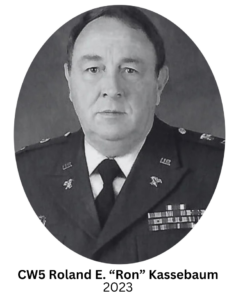 CW5 Roland E. “Ron” Kassebaum was born on February 21, 1946 in Deshler, Nebraska. He graduated from Hebron High School, Hebron, Nebraska in 1964. He attended Fairbury Junior College, Fairbury, Nebraska and the University of Nebraska, Lincoln, Nebraska, and received a Bachelor of Science Degree from the University of the State of New York in 1991. He later attended Liberty University, Lynchberg, Virginia, for courses in accounting and Allen County Community College, Iola, Kansas, for a course in Business Law.
CW5 Roland E. “Ron” Kassebaum was born on February 21, 1946 in Deshler, Nebraska. He graduated from Hebron High School, Hebron, Nebraska in 1964. He attended Fairbury Junior College, Fairbury, Nebraska and the University of Nebraska, Lincoln, Nebraska, and received a Bachelor of Science Degree from the University of the State of New York in 1991. He later attended Liberty University, Lynchberg, Virginia, for courses in accounting and Allen County Community College, Iola, Kansas, for a course in Business Law.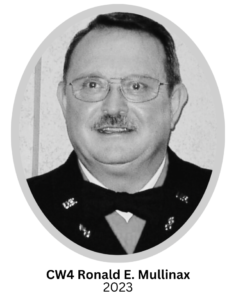 Chief Warrant Officer Four Ronald E. Mullinax was born on August 25, 1946, in Norton, Kansas to Earl and Mary Posson. He was adopted by John and Ada Mullinax. He grew up in Lenora, Kansas, graduating from Lenora Rural High School in 1965. After completing a Denver Automotive Institute training program, Ron worked at Look Body Shop in Norton until 1968.
Chief Warrant Officer Four Ronald E. Mullinax was born on August 25, 1946, in Norton, Kansas to Earl and Mary Posson. He was adopted by John and Ada Mullinax. He grew up in Lenora, Kansas, graduating from Lenora Rural High School in 1965. After completing a Denver Automotive Institute training program, Ron worked at Look Body Shop in Norton until 1968.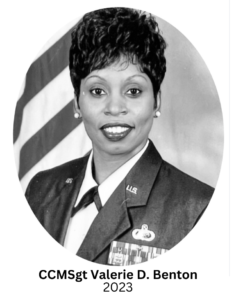 CCMSgt Valerie D. Benton was born on Dec. 10, 1959 in Racine, Wisconsin, where she spent her childhood. She graduated from Washington Park High School in 1978. Soon after graduation she enlisted in the U. S. Air Force and headed to Basic Training at Lackland AFB, Texas in December of 1978. After completion of Basic training, she attended Technical Training at Lowry AFB, Colorado, and graduated as a Food Service Specialist.
CCMSgt Valerie D. Benton was born on Dec. 10, 1959 in Racine, Wisconsin, where she spent her childhood. She graduated from Washington Park High School in 1978. Soon after graduation she enlisted in the U. S. Air Force and headed to Basic Training at Lackland AFB, Texas in December of 1978. After completion of Basic training, she attended Technical Training at Lowry AFB, Colorado, and graduated as a Food Service Specialist.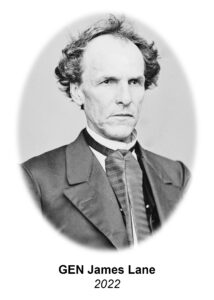 General James H. Lane was a militia leader during the Bleeding Kansas period, the commander of the Kansas “Jayhawker” Brigade during the Civil War, and was one of the first United States Senators from Kansas.
General James H. Lane was a militia leader during the Bleeding Kansas period, the commander of the Kansas “Jayhawker” Brigade during the Civil War, and was one of the first United States Senators from Kansas.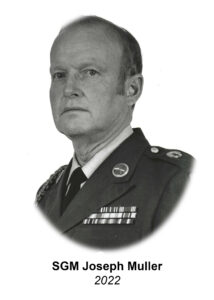 Sergeant Major Joseph T. “Jody” Muller was selected for the Kansas National Guard Hall of Fame for his exceptional service as a citizen soldier in the Kansas National Guard for over 41 years.
Sergeant Major Joseph T. “Jody” Muller was selected for the Kansas National Guard Hall of Fame for his exceptional service as a citizen soldier in the Kansas National Guard for over 41 years.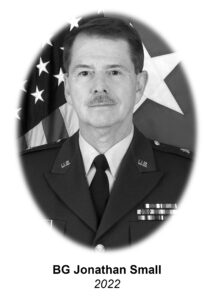 Brigadier General Jonathan P. Small served as The Adjutant General of Kansas from November 1, 2003 to January 4, 2004, culminating a 35-year military career as a distinguished attorney, community leader, citizen-soldier, and military leader. He served as Assistant Adjutant General-Army from 1999 to 2003, and as Commander of the Land Component for the Joint Force Headquarters-Kansas.
Brigadier General Jonathan P. Small served as The Adjutant General of Kansas from November 1, 2003 to January 4, 2004, culminating a 35-year military career as a distinguished attorney, community leader, citizen-soldier, and military leader. He served as Assistant Adjutant General-Army from 1999 to 2003, and as Commander of the Land Component for the Joint Force Headquarters-Kansas.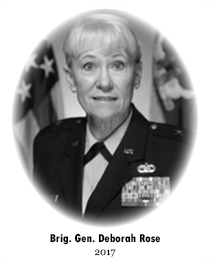 Brigadier General Deborah Rose entered military service with a direct commission into the United States Air Force Nurse Corps in March 1983, assigned to the 184th Tactical Fighter Group. She transferred to the 190th Clinic in December 1985. In October 1990, she deployed to Jeddah, Saudi Arabia, where she served in an Air Transportable Hospital during Desert Shield. In February 1991, she was activated and deployed to Offutt AFB, Nebraska, assigned to the hospital.
Brigadier General Deborah Rose entered military service with a direct commission into the United States Air Force Nurse Corps in March 1983, assigned to the 184th Tactical Fighter Group. She transferred to the 190th Clinic in December 1985. In October 1990, she deployed to Jeddah, Saudi Arabia, where she served in an Air Transportable Hospital during Desert Shield. In February 1991, she was activated and deployed to Offutt AFB, Nebraska, assigned to the hospital.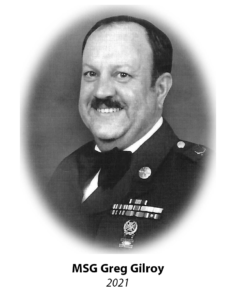 Master Sergeant Greg Gilroy was born on July 25, 1947 at Ottawa, Kansas. He was a lifelong resident of Ottawa, graduating from Ottawa High School in 1965. He then attended Emporia State University during the 1965-66 school year.
Master Sergeant Greg Gilroy was born on July 25, 1947 at Ottawa, Kansas. He was a lifelong resident of Ottawa, graduating from Ottawa High School in 1965. He then attended Emporia State University during the 1965-66 school year.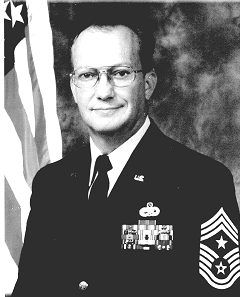
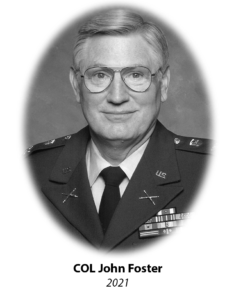
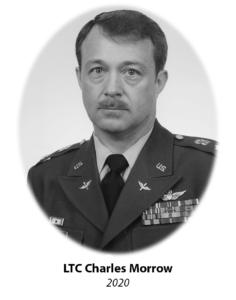
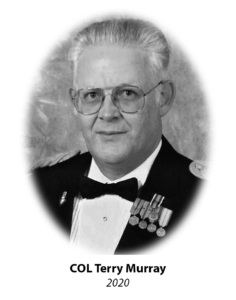

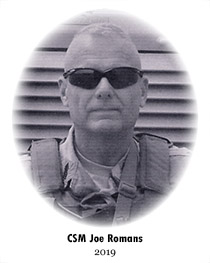
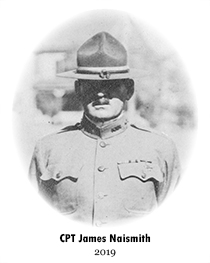

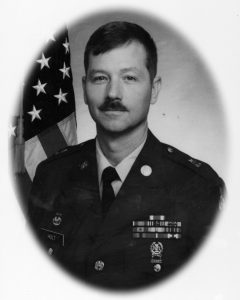 Sergeant Major Lynn E. Holt built his distinguished Kansas Army National Guard career developing strength, retaining Soldiers and insuring Soldiers received proper training. He served from the Detachment through State level. He is known for his ability to recognize Soldier needs at all levels. The same care he felt for Soldiers carried over into his community activities. SGM Holt’s passion for people and their needs exemplifies his true character. He devoted his entire adult life to the betterment of our nation, our state and the Kansas National Guard.
Sergeant Major Lynn E. Holt built his distinguished Kansas Army National Guard career developing strength, retaining Soldiers and insuring Soldiers received proper training. He served from the Detachment through State level. He is known for his ability to recognize Soldier needs at all levels. The same care he felt for Soldiers carried over into his community activities. SGM Holt’s passion for people and their needs exemplifies his true character. He devoted his entire adult life to the betterment of our nation, our state and the Kansas National Guard.